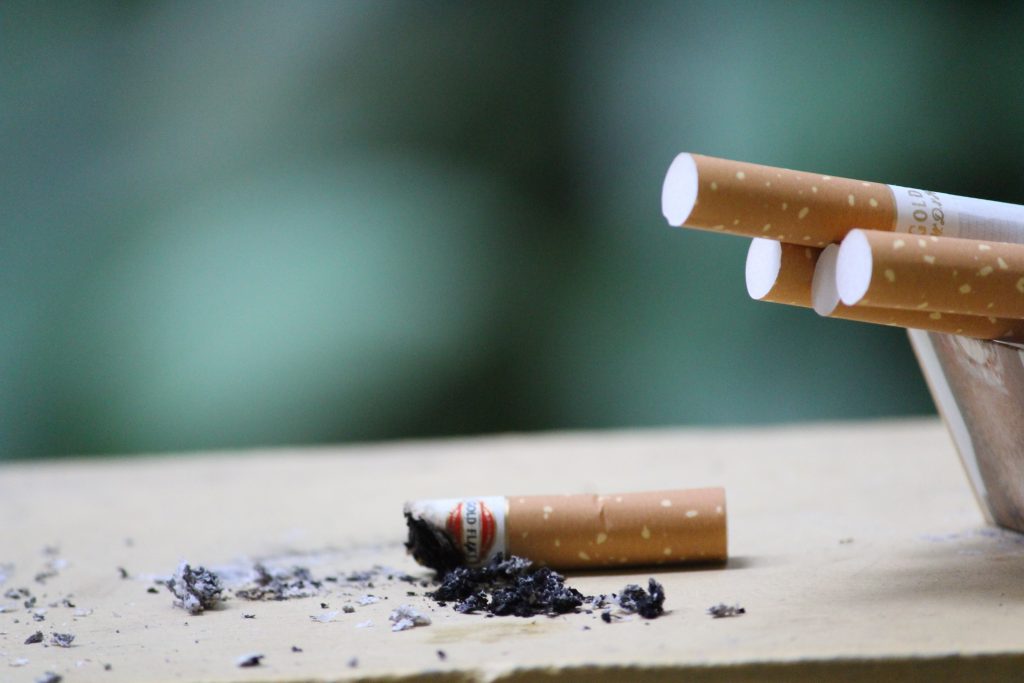What a drag: Discarded cigarette filters choking up our beaches

July 10th, 2018
The words plastic and beach often bring to mind images of plastic grocery bags and beverage bottles scattered along the sea.
While these items are high up on the list, they are not as commonly found as cigarette butts. According to recent data released by Ocean Conservancy, a Washington-based environmental advocacy organisation, cigarette butts are the most common plastic products found on beaches.
Volunteers for the group’s Coastal Cleanup Programme picked up more than 2.4 million cigarette butts from beaches last year, a tower of rubbish 255 times taller than Mecca’s 601 metres tall Royal Clock Tower.
While cigarettes have always maintained their deadly allure for smokers, nobody likes cigarette butts. Cigarette butts are not biodegradable, and their plastic filter can easily find its way into the sea, where it releases toxic chemicals such as arsenic, nicotine, lead, benzene and cadmium.
The dirty history of filters
Perhaps it would be difficult for today’s smokers to imagine their cigarettes without filters. The addictive sticks, however, came filter-free, for quite a long time. Before 1952, smokers got the most out of their tobacco sticks by inhaling unfiltered chemicals.
As scientific evidence against the hazards of smoking filterless cigarettes became challenging to dismiss, cigarette manufacturers launched a so-called “Protects Your Health” campaign and accessorised their products with filters.

Photo: pxhere
Ironically, the ultra-toxic nature of those primitive filters, produced as part of the health-conscious campaign, inflicted significant damage on human health and accelerated the pace of climate change.
Lorillard Tobacco Company, the producer of Kent cigarettes, was the first to introduce filtered cigarettes. Kent’s Micronite filter, however, turned out to contain crocidolite asbestos, a deadly type of asbestos far more poisonous than tobacco smoke.
Lorillard’s mistake put factory workers and consumers at risk of developing malignant mesothelioma, the most uncommon and aggressive type of lung cancer that is mainly caused by continuous exposure to asbestos. Since the 1980s, Lorillard has paid millions of dollars in compensation to formers employees and customers who had developed asbestos-related ailments.
Leading American cigarette maker, Philip Morris developed its filters with an even deadlier alternative. The poisonous antifreeze agent diethylene glycol (DEG) was supposed to, as Philip Morris ads put it, “take the fear out of smoking”. Once in the body, DEG turns pugnacious and fatally attacks the nervous system.
American chemical company DuPont later came up with a seemingly safe filter which also turned out to be noxious. DuPont’s scientists had tried to entrap tobacco smoke particles using a variety of fabrics, such as Dacron, a synthetic material used in textile industry.
Cigarette makers enthusiastically adopted DuPont’s scientific formula, however, it later turned out that Dacron shed tiny fibres that smokers could have inhaled into their lungs.
Cigarette butts and the environment
Even if we consider cigarette filters as ineffective toxin tubes, that doesn’t take away from their harmful impact on the environment. As more places prohibited smoking in their premises, more people began smoking outdoors. Research shows that cigarette ends disposed of on sidewalks, can still end up in oceans, as the wind readily displaces the tiny trash.
Nicotine is one of the most harmful chemicals found in cigarettes and their stump. In fact, some researchers have referred to the substance as a powerful botanical pesticide.
Arsenic, another compound in cigarette butts, is a well-known poison. According to researchers, a single cigarette butt contains enough toxins to kill half the minnows (small freshwater fish) in a litre of water in less than 96 hours.
Potential Solutions
Some see switching to e-cigarettes – battery-powered vaporisers – as a way to reduce the volume of toxic waste from their traditional counterparts.
Health officials in England, Scotland, New Zealand and Canada have issued statements that encourage smokers to switch to vaping.
The Irish Cancer Association, however, has said that it cannot endorse vaporisers until further research on the impact of their long-term use becomes available.
E-cigarettes are also still far from eco-friendly as discarded vaporisers cannot be recycled. Also, if still filled with nicotine at the time of discard, the battery-powered cigarettes will have the same toxic consequences on the environment as their traditional alternative.
In Ireland, the Litter Act imposes a €150 fine on any littering, including discarding cigarette ends in the environment.
Seán Lynch, the Irish founder of a global and open litter mapping application called Open Litter Map, also thinks that mapping the toxic trash can help educate people and galvanise government officials into action.
“I come across cigarette butts at almost every step,” Seán Lynch told The Green News. “By mapping litter, we can reveal the pollution and communicate it in new and informative ways. It will change not only human but institutional decision-making and behaviour.”
[x_author title=”About the Author”]







